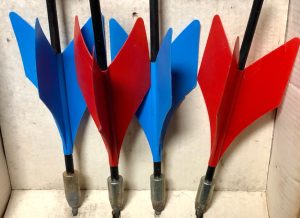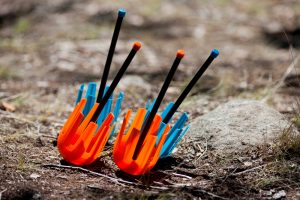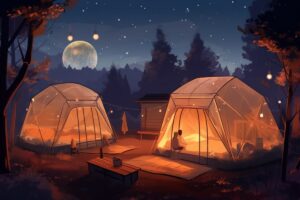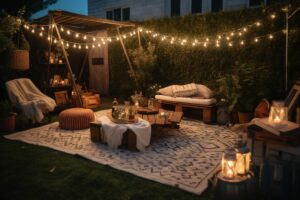When you’re looking for a playground surface, you’ve got a lot of things to choose from.
The surface underneath playground equipment like slides, seesaws and swing sets, need to be suitable to protect children from injury should they fall or jump.
You’ll also need to consider the installation, cost, cleanliness, maintenance and longevity.
In This Article – We’ll give you an in-depth analysis of the different types of playground surface materials. We’ll cover their effectiveness as well as their advantages and disadvantages.
We’ll cover:
- Grass
- Sand
- Bare earth
- Pea Gravel
- Wood chips or mulch
- EWF – Engineered Wood Fiber
- Rubber mulch
- Tubber tiles and poured rubber
- Turf or artificial grass
Read on to find out information about each surface type to help you make your decision.
Grass
Lots of people use grass underneath their playsets – usually, this is because it’s already in place.
This means that it often has zero costs. However, there are things you’ll need to take into account.
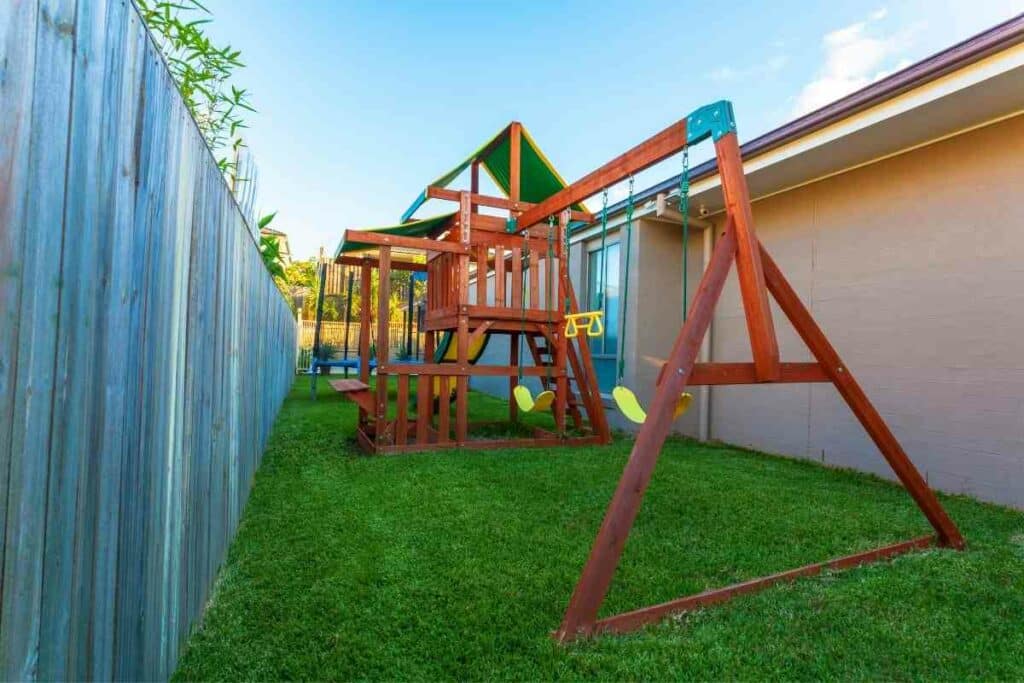
Safety is a huge consideration when you’re talking about kids playing.
Some people presume that grass is a good surface for a playground, however, it’s certainly not the best material for playground surfaces as we discussed in this article about what to put under a swing set.
Even though it’s better than concrete or paving, from three feet up, it offers very little protection.
Maintenance and cost of grass
Maintenance might be an issue as you’re likely to get a lot of wear and tear in specific areas.
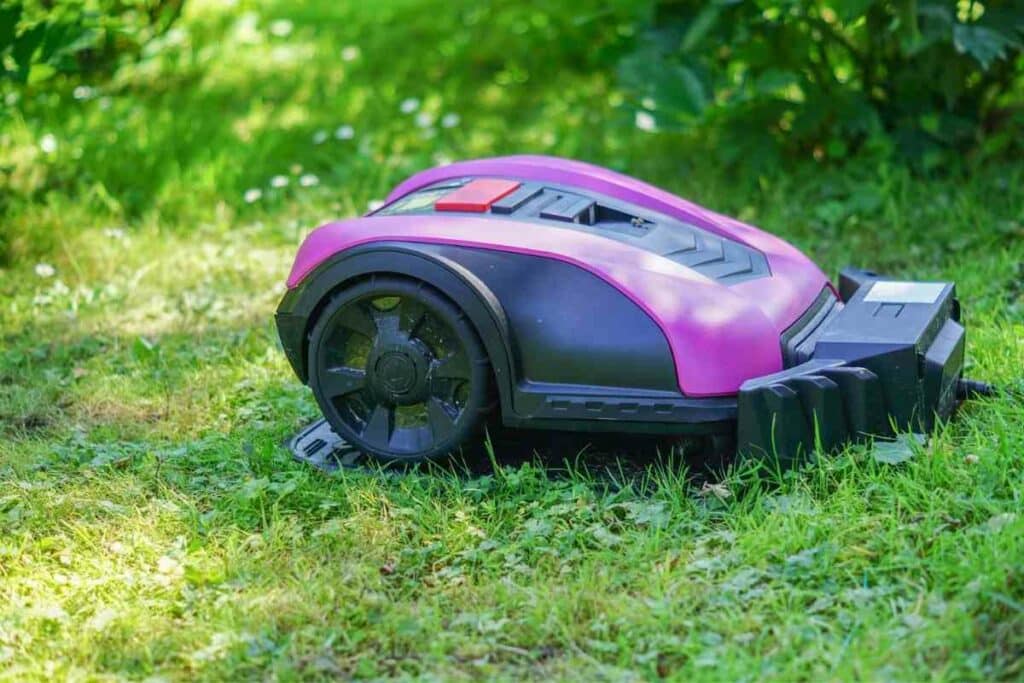
Also, if you’ve got playground equipment on top of grass, it will make it difficult to mow it.
Grass, however, is relatively inexpensive but you will probably have to deal with bald spots.
Also, grass does require regular watering in the summer months when there’s not a lot (if any) rainfall around.
Advantages and Disadvantages of Grass
Advantages
- Looks good when it’s maintained well
- If you use existing grass, there’s no cost upfront
- Doesn’t get hot in the sun
Disadvantages
- It isn’t as safe as some of the other playground surface options
- It wears down easily underfoot
- It needs regular maintenance, which isn’t always easy
Sand
While sand can be used as a playground surface, it’s not usually used.
In terms of safety, if the sand is twelve inches deep or more, it is classed as a safe surface.
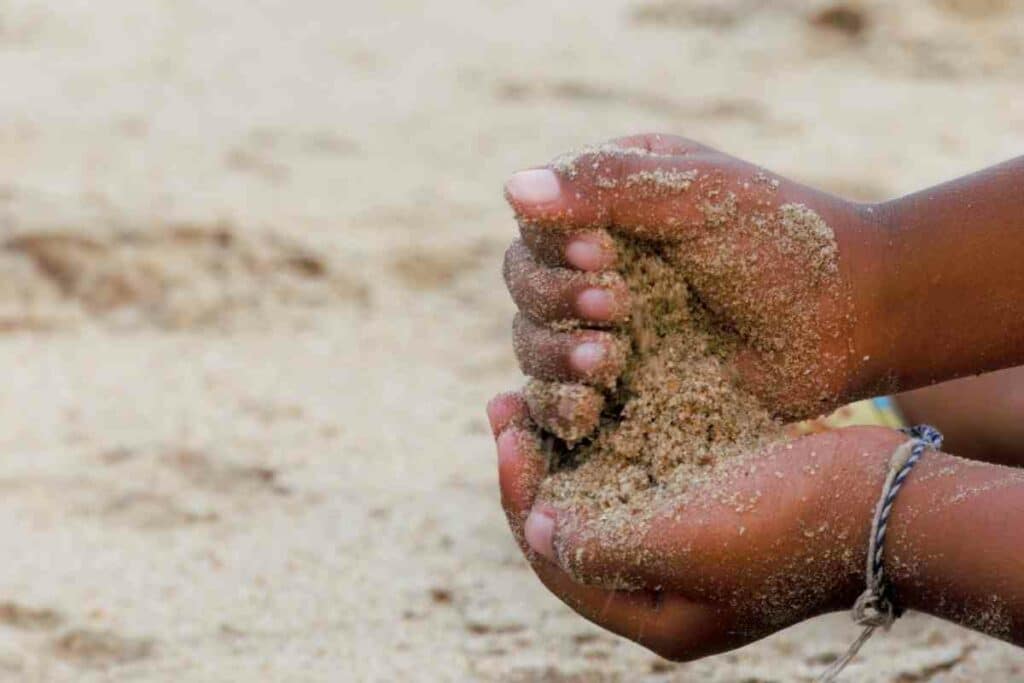
This means it will protect well against falls compared to concrete and even grass and bare earth.
There are downsides to sand, though, especially if it’s in an open area and not a sandbox.
For example, there could be lots of insects, microbial organisms, and even animal waste.
Maintenance and cost
Sand is an affordable playground surface material, and it can cost as little as $0.50 per sq. ft.
As mentioned above, it should be twelve inches deep to be considered safe. This means that you might need to shovel and rake it regularly so that it stays even.
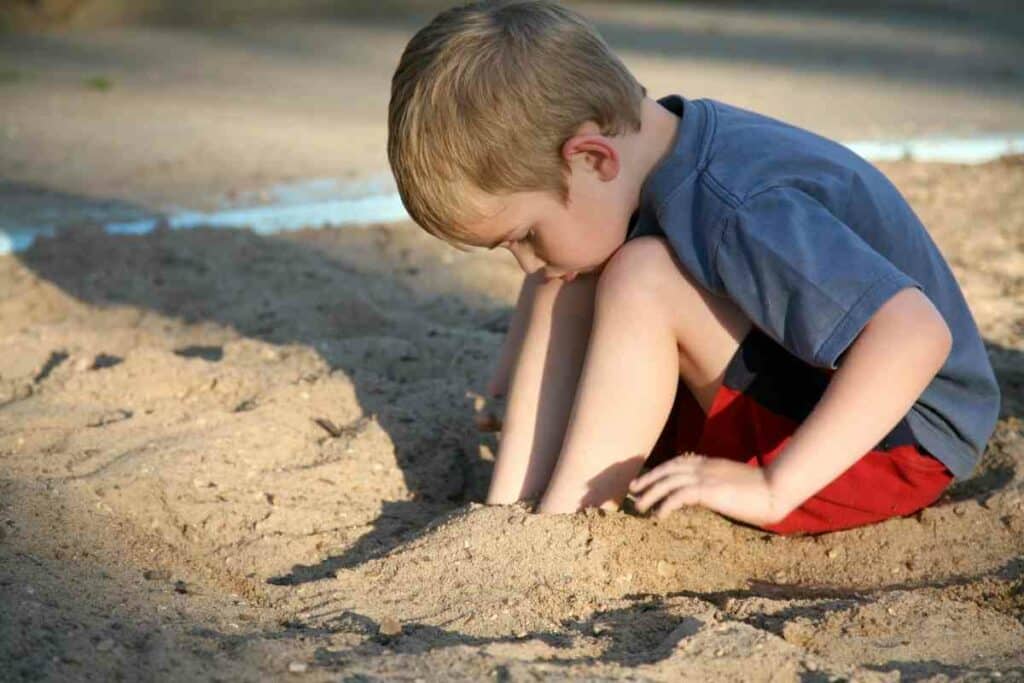
You should also ensure there is proper drainage so that it doesn’t hold standing water, which would be a haven for insects like mosquitoes.
It’s also important to check regularly for things that have been left in the sand inadvertently like toys, as these might cause injury.
Advantages and Disadvantages of Sand
Advantages
- It’s easy to find and install
- It’s low cost
- It provides good cushioning at 12 inches
- It’s not a choking hazard
Disadvantages
- It tends to shift a lot
- It requires maintenance
- It can become hard-packed
- It could contain foreign objects, microbial organisms, and animal waste
- It will end up in clothes and in the house
Bare earth
This isn’t usually the first choice when people look for the best material for playground surfaces, but it is something that some people use as a temporary measure or if they have limited options.
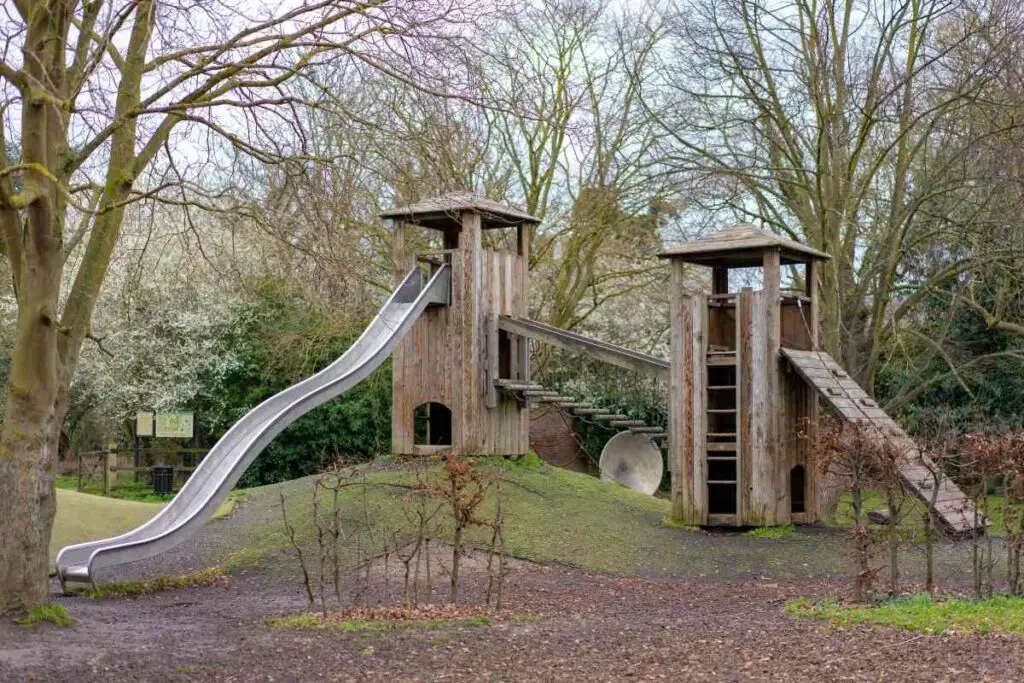
Often, people who end up with bare earth have often started with grass, but wear and tear have meant there is no grass anymore!
In terms of safety, bare earth provides little to no protection from falls and isn’t recommended as a surface material for playframes, swing sets, or seesaws.
Maintenance and cost
Bare earth means no maintenance and no upfront cost.
When it rains, you’re left with a pile of mud and this will be brought into the house and around the rest of the yard, which means you’ll need to do a lot more cleaning!
Advantages and Disadvantages of Bare Earth
Advantages
- It’s free!
- There’s no maintenance
Disadvantages
- It’s not very safe
- Mud and dirt will be tracked around the yard and into the house
- It’s not aesthetically pleasing
- Might contain sharp objects and insects
Pea Gravel
Pea gravel is a popular playground surface material and it’s not as problematic as sand.
What’s more, it’s easy to install and cheap!
There are lots of pros and cons to pea gravel and like sand, it should be installed to a depth of twelve inches for safety reasons.
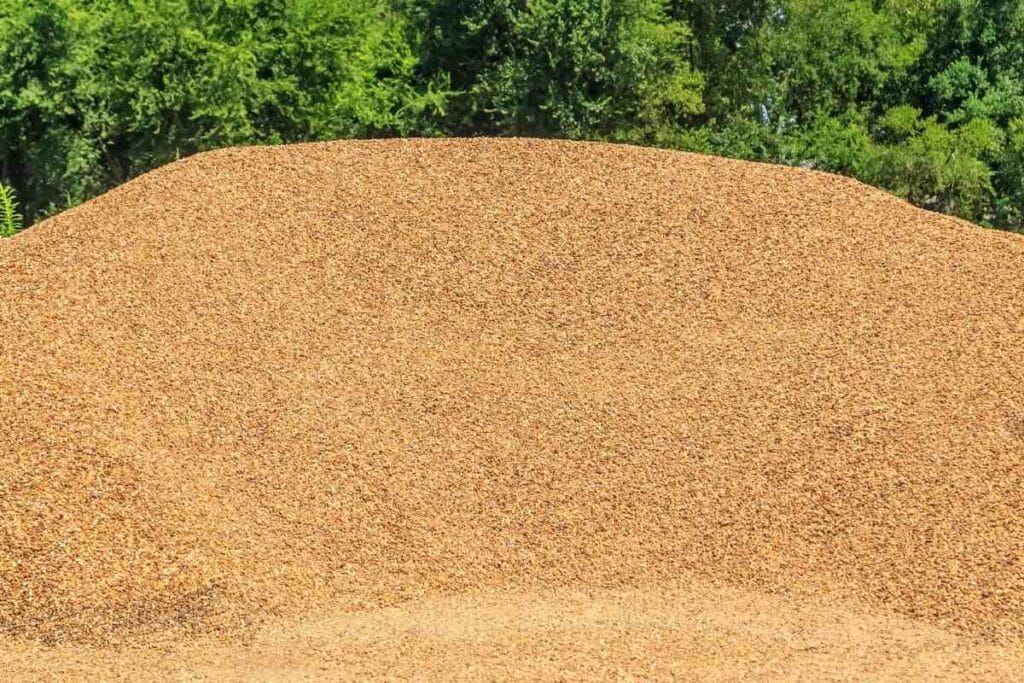
When talking of safety, pea gravel isn’t a suitable surface for families with under 5s.
This is because pea gravel is a choking hazard.
Unlike sand, though, peal gravel tends to be free from insects, animals, and microbial organisms.
Maintenance and cost
Pea gravel is one of the most affordable playground surface materials there is.
You can find it for as little as $1 per sq. ft.
In terms of maintenance, it doesn’t settle as much as sand and is great for drainage.
Advantages and disadvantages of pea gravel
Advantages
- Easy to find and install
- Low cost
- Provides cushioning at 12 inches deep
- Drains well
- Won’t transfer easily
- Most insects, animals and microbial organisms will stay away
Disadvantages
- It’s a choking hazard for under 5s
Wood chips and mulch
These are quite a common site in smaller public playgrounds, though they’re not as popular as EWF (Engineered Wood Fibers) or pea gravel.
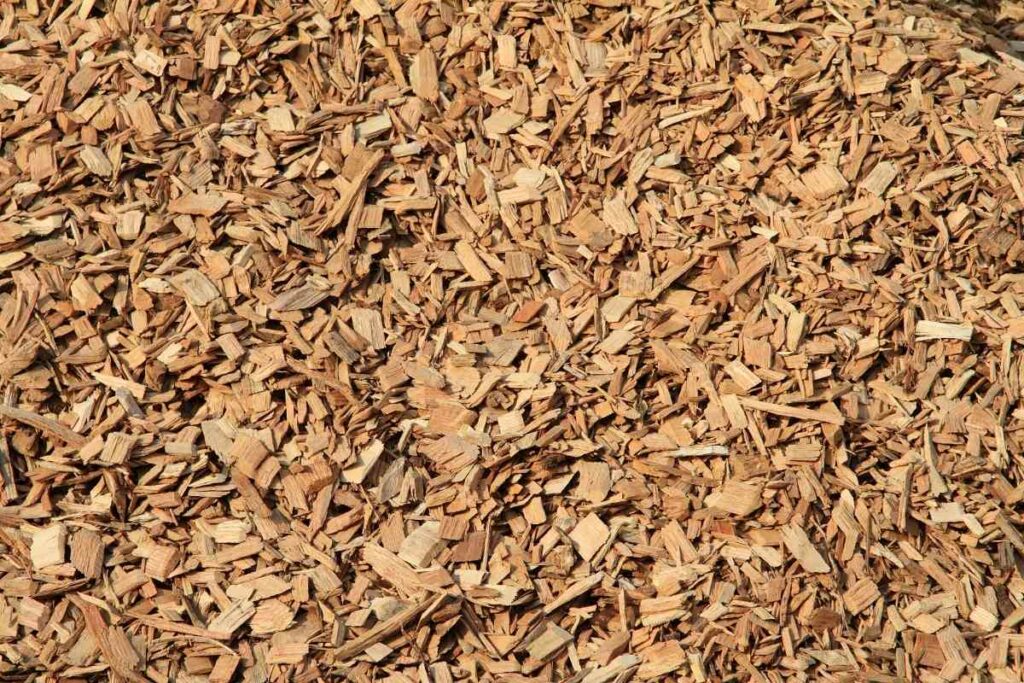
Wood chips and mulch have a few benefits but there are some things to consider.
Safety-wise, wood chips provide great shock absorption at 12 inches deep.
However, they’re not suitable for under 5s and young children could choke.
Maintenance and cost
Wood chips are one of the cheapest playground surface materials, but you will pay more for this than you would sand or pea gravel.
For a kids’ playground, however, you should pay slightly more to ensure you get chemical-free woodchips that contain no foreign materials or objects.
This will usually cost around $3-$4 per sq. ft.
It can be a challenge to maintain wood mulch or wood chips because they’re lightweight and will move easily underfoot.
This means you’ll often see wood chips outside of the area they’re designed for.
Advantages and disadvantages of wood chips and mulch
Advantages
- They’re readily available
- They provide good cushioning (12 inches)
- They look natural in your backyard
Disadvantages
- Wood chips are a potential choking hazard for under 5s
- You’ll need regular maintenance (to keep them in place)
- Can grow mold if they get wet a lot
- They attract insects
- You’ll need to refill regularly
EWF – Engineered Wood Fiber
This is a relatively new playground surface material whose popularity is increasing.

It is similar to mulch and wood chips in many ways but is slightly better.
In terms of safety, engineered wood fiber is great at shock absorbency.
It’s also sustainable and slip-resistant. Just like wood chips and mulch, however, it does come with a choking risk for younger children.
Maintenance and cost
EWF is more expensive than wood chips, pea gravel and sand, especially if you go for high-quality
EWF from sustainable sources. You might pay as much as $7 per sq. ft.
In terms of maintenance, though, EWF will usually stay put better than mulch or wood chips.
Advantages and Disadvantages of EWF
Advantages
- Installation is easy
- Natural and sustainable
- Great cushioning (when 12 inches deep)
Disadvantages
- It’s a choking risk for under 5s
- Needs maintenance
- Can contain insects and foreign objects
- Can go moldy if it gets wet often
- Needs replenishing
Rubber Mulch
This playground surface material is created by recycling old tires, which is a great way of reducing landfill.
However, rubber can contain carcinogens and harmful chemicals, so you’ll need to buy carefully.
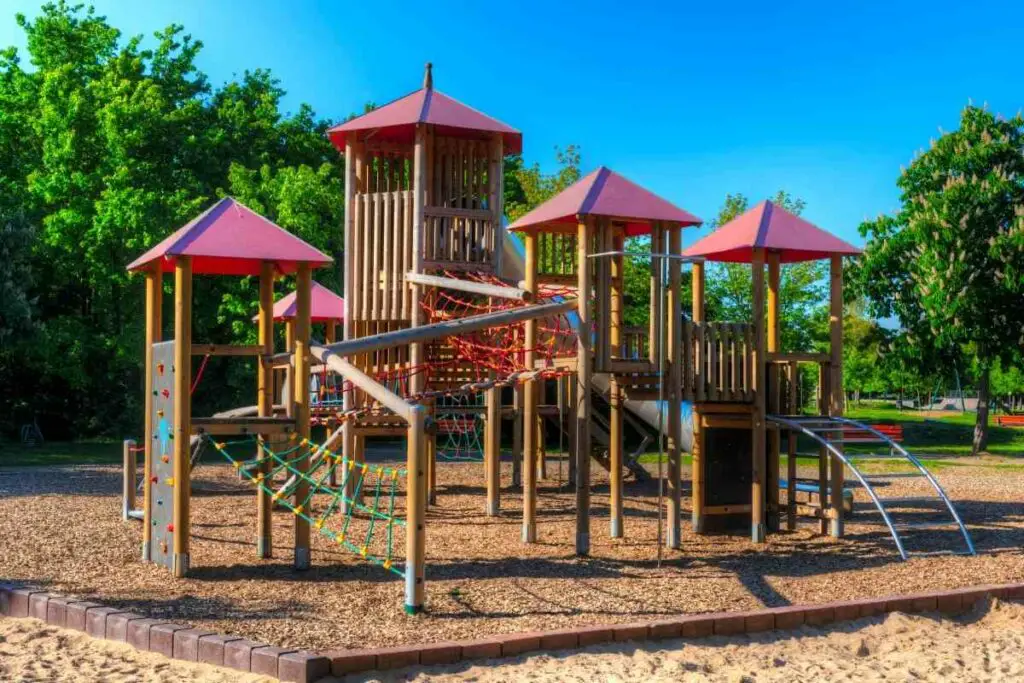
Otherwise, rubber mulch is a fantastic shock absorber. It’s also easy to put in place.
In terms of safety, rubber mulch is great at shock absorbency, but it is a choking hazard for younger children.
Maintenance and cost
This is usually more expensive compared to sand and pea gravel, but it doesn’t degrade and won’t need replenishing any time soon.
Advantages and disadvantages of rubber mulch
Advantages
- Easy installation
- Great cushioning (12 inches deep)
- Good drainage
- Won’t transfer easily
- Insects, animals, and microbial organisms aren’t usually a problem
- Doesn’t need replenishing often like wood chips
Disadvantages
- Choking risk for younger children
- Can contain chemicals
Artificial Grass
Artificial grass is a new alternative to real grass.
It’s not great for falls unless you put padding underneath.
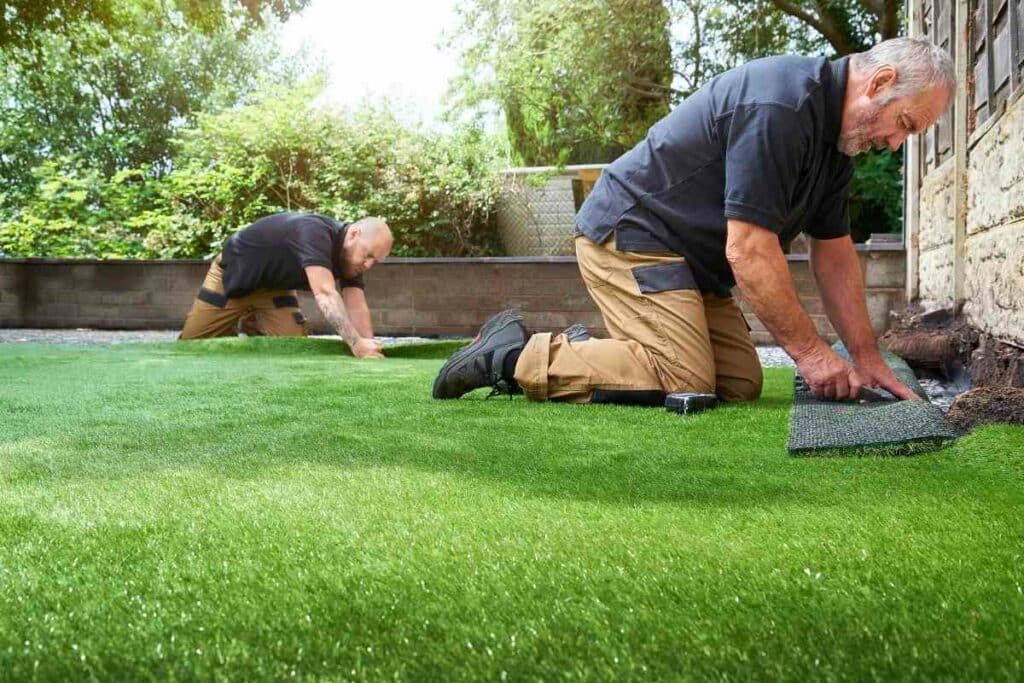
People often get artificial grass because they think it doesn’t require maintenance, but this isn’t the case.
Artificial grass needs cleaning and can become slippery when it rains or hot in the sunshine.
Maintenance and cost
This is one of the most expensive playground surface options and you can pay as much as $10 per sq. ft, especially if you get padding underneath.
In terms of maintenance, you’ll need to sweep and hose with water. Sometimes weeds will grow on it too.
Advantages and disadvantages of artificial grass
Advantages
- It provides great cushioning
- It drains well
- Won’t get transferred onto other areas or into the house
- Very clean (as long as it’s hosed down)
Disadvantages
- Needs maintenance but not a lot
- Expensive
Final thoughts on the best material for playground surface areas
When looking for a playground surface material, there are lots of choices.
Deciding comes down to personal preference and budget. You also need to consider the safety of your little ones.
Spending more on an initial investment might mean saving in the long term.
Also, choosing the best playground surface material you can afford means you reduce the chances of your children being hurt in trips and falls.
As you can see from this article, there is no one best material for playground surfaces, but you have lots of information to now help you decide!

